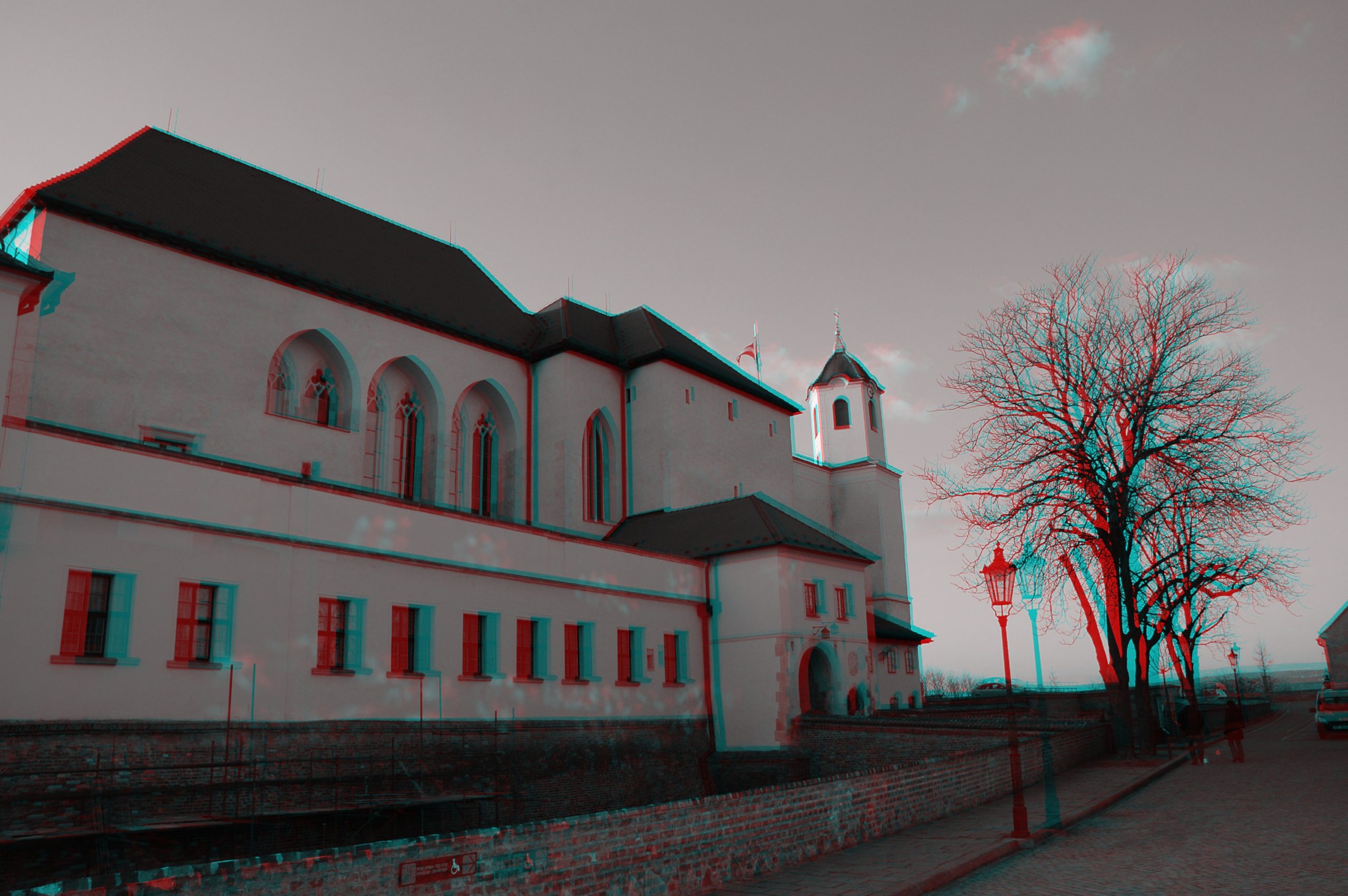Anaglyf
Na základě informací v článku vytvořte stručný návod (v češtině), jak vytvořit 3D snímek pomocí anaglyfu. Poté postup sami prakticky ověřte vytvořením vlastní 3D fotografie.
Human eyes are located about 7 cm apart on the face. Therefore, each eye perceives reality from a different angle. Our eyes do not see exactly the same thing. Try holding a finger in front of your eyes and alternately closing your left and right eye. You will see two different images. But when you focus on the finger, your brain will merge two different images into one. This is called stereoscopic vision and provides us with a three-dimensional picture of the world.

Zdroj
Anaglyph is one of the simplest methods of displaying stereo photographs. Its biggest advantage is that it can be used on all existing display devices, and of course also printed on paper. The only tool you need are the special glasses. They have a red filter on their left eye, and a cyan filter on their right.

Zdroj
Anaglyph was invented in 1853 by Wilhelm Rollmann in Leipzig. The oldest anaglyphs were printed by a joint printing from two plates with red and green colours, or projected by a projector with two lenses through colour filters. The more suitable cyan colour came to be used later. One can also encounter drawn figures, especially in descriptive geometry. Currently, computer technology is used to create anaglyphs. You can find some free software for creating anaglyph on the internet, for example:
http://stereo.jpn.org/eng/stphmkr/index.html
An anaglyph is made up of colours that are complementary to each other. There are many such colour combinations, but not all of them are suitable. Today, the red-cyan combination is most often used, with the red filter on the left eye and the cyan filter on the right. In the past, red-green and red-blue combinations were also used, but they are not exactly complementary. Other combinations of complementary colours are, for example, blue – yellow and violet – green. An anaglyph is created by converting the image for the left eye (red filter) to a cyan-white scale, and the image for the right eye (cyan filter) to a red-white scale. The two images are then displayed over each other. In places where red and cyan meet, a black color or the corresponding shade of gray will be created. The observer then sees with each eye a black-and-white image formed by a complementary colour to the filter of the glasses, and thus creates a spatial perception in the brain from the two sub-images.
The biggest disadvantage of anaglyph is the already mentioned impossibility of displaying real colours. The other problem is 'ghosting', where each eye perceives some of the other-eye's view. This appears especially on contrasting edges, where dark and light surfaces alternate. The ghosts can arise for two reasons. The first and most common reason is the commonly used JPEG graphic format, which even with low compression stores image information in squares. Therefore, it is advisable to use uncompressed formats such as PNG or TIFF for anaglyphs. The second reason for ghosting might be the inaccurate colours of the created anaglyph. This may depend on the quality and calibration of the screen and printer.
Finally, how to take your own 3D photos? There are special cameras for making 3D photos, but you can make nice anaglyphs even without it. The only thing you need is to take two similar photos instead of one. Before taking the second picture you must move the camera approx. 7 cm to the right (or a little bit more). Then you can use the software mentioned above and it will make the anaglyph from your two photos. That’s all!

Zdroj

